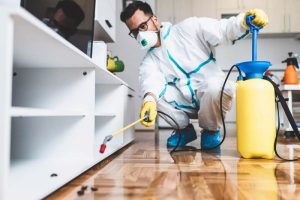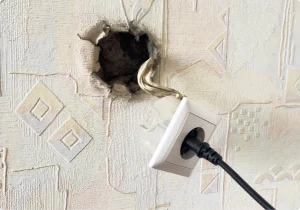Your home’s siding plays an essential role in protecting your property and keeping it looking great. Over time, wear and tear, harsh weather, and age can lead to issues that might go unnoticed until it’s too late. If left unaddressed, siding problems can result in increased energy bills, water damage, or even structural concerns. Fortunately, professional services for siding repair in Canton can help restore your home’s exterior and maintain its value. To prevent costly repairs, it’s crucial to recognize the signs that your siding needs attention.
The Importance of Maintaining Your Home’s Siding
Siding isn’t just about appearances; it provides insulation, weather protection, and structural support. When damaged, it can compromise your home’s overall condition. Spotting early warning signs allows professionals to assess the situation and recommend timely repairs, saving money and ensuring your comfort.
Cracks, Warping, or Rotting
Small cracks or warped panels might not seem like a big issue, but they are early indicators of underlying problems. Cracks provide entry points for water, insects, and air, potentially causing significant damage to your home’s framework. Warped or rotting sections typically suggest exposure to excess moisture, which can weaken the siding material and lead to costly repairs.
If you notice these issues, don’t delay reaching out to a professional. Their trained eyes can identify the root cause and implement effective solutions. Neglecting these signs could result in escalating damage and the need for a full siding replacement.
Faded or Peeling Paint
A home with faded or peeling exterior paint often signals trouble beneath the surface. Your siding should retain its color for many years, but severe fading can indicate prolonged sun exposure or aging materials. Additionally, if paint begins to peel, it may mean the siding is no longer adequately protecting your home from moisture.
Before repainting your exterior, professionals can assess whether the fading or peeling signals a deeper issue. Keeping siding well-maintained helps extend its lifespan and protect your home from further damage.
Mold, Mildew, or Discoloration
The presence of mold or mildew on siding is never a good sign. These growths suggest that moisture is seeping into your home’s structure, often due to cracks, leaks, or improper installation. Besides being an eyesore, mold, and mildew can compromise the integrity of your siding and create health hazards.
Regular cleaning can help prevent these problems, but it’s critical to address the underlying cause. To maintain your home’s exterior, it’s essential to clean vinyl siding regularly to prevent dirt buildup and potential damage. However, addressing mold or mildew should always involve professional services for a lasting solution.
Rising Energy Bills
Siding works in tandem with your insulation to regulate your home’s temperature. If you notice your energy bills climbing unexpectedly, your siding might not be performing as it should. Drafts near walls or windows, excessive heat loss in winter, or a difficult time cooling your home in summer are potential warning signs.
Professionals can evaluate whether damaged siding is playing a part in this problem. They’ll prescribe targeted repairs or replacements to improve your home’s energy efficiency and save you money in the long run.
Bubbling or Blistering
Bubbles or blisters on your siding surface are often caused by trapped moisture. This is a clear warning that your siding is failing to shield your home from water damage. Once moisture penetrates, it can lead to a range of issues, from rotting wood to mold infestation.
Having these issues inspected promptly by a professional can prevent further deterioration and safeguard your home’s structure.
Visible Gaps or Loose Panels
Siding panels that have become loose or have developed gaps can compromise your home’s protection. When panels shift or detach, they expose the underlying structure to air, water, and pests. Over time, this can lead to wood rot, increased heating or cooling costs, and even pest infestations.
Minor gaps and loosened areas are often fixable without requiring a full replacement. However, only an expert can determine the extent of the damage and recommend the best course of action.
Conclusion
Your siding is one of the most vital elements of your home’s exterior, and keeping it in top shape ensures your house remains protected, energy-efficient, and visually appealing. By understanding and recognizing the warning signs—like cracks, mold, rising energy bills, or bubbling—you can catch potential problems early.
Remember, addressing issues promptly with the help of seasoned professionals is the key to avoiding costlier repairs or replacements. Whether it’s an inspection, repair, or maintenance, trust experts to restore your siding and protect your home for years to come.



